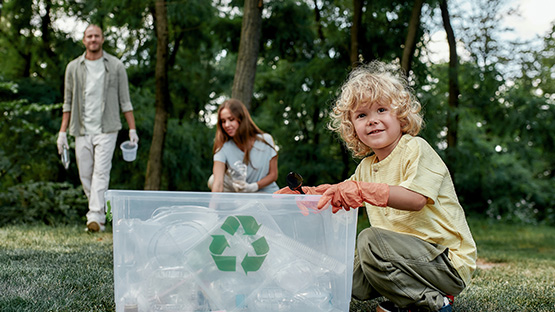Decarbonisation - what is it? Examples and definition
Ekologia

26 March 2023
An increasing number of countries in Europe and around the world are engaged in a wide range of activities to improve our environment. Changes in the energy, economic and business sectors are necessary to save our environment from pollution resulting from the exploitation of non-renewable energy resources or from ill-considered climate policies. One such change is the decarbonisation process.
Decarbonisation - what is it?
The question to start with is what is decarbonisation? In an environmental context, it is the name for a process that involves reducing or completely excluding the production of CO2 (carbon dioxide), by man. This refers to gas emissions produced mainly by the intensive exploitation of fossil fuels such as oil, coal, lignite or natural gas. The CO2 produced is released into the atmosphere, which then leads to a warming of our climate. This is why CO2 and its derivatives are called greenhouse gases.
Decarbonisation is intended to help reduce human generation of these gases by means of restructuring the economy, energy extraction methods and the economic changes that follow. As a result, terms such as energy decarbonisation or industrial decarbonisation have become popular, especially in public discussion. As a result of the high level of pollution of the planet, these changes seem not only necessary, but also inevitable. Especially since fossil fuels are among the non-renewable energy sources and we are therefore not able to produce them again and one day they will simply run out.
What is subject to decarbonisation and which areas are affected?
The first sector to undergo this process is the energy sector. Poland is one of the few countries in the world that bases almost its entire energy economy on coal. More than 80% of our country's energy is generated from hard coal, lignite and natural gas. Its combustion to produce electricity has a huge impact on the state of our air, which receives a lot of carbon dioxide through this process. It is not without reason that more and more Polish towns and cities, such as Kraków and Wrocław, are subsidising their residents with new cookers in order to eliminate the use of fossil fuels as quickly as possible.
What does decarbonisation of the economy mean? The definition of this term includes the complete divestment or reduction of CO2 production by various economic sectors. Here, not only energy, but also chemical plants, steel mills, cement plants, paper mills and other industries that contribute significantly to carbon dioxide production are distinguished. This also includes the process of so-called decarbonisation of buildings. Like single-family homes and apartment buildings, spaces used in industry are heated mostly by coal. Only a fraction of these are energy-efficient buildings.
Benefits from decarbonisation, or what effects does it have?
What are the advantages of decarbonisation in Poland? First and foremost, cleaner air. Unfortunately, every year Polish cities are among the top ten places with the worst air condition. Especially in winter, when, in addition to the smoke generated by industry or the power industry, everyone starts heating their homes.
Decarbonisation can change this situation. It is a process that will allow us, first and foremost, to breathe air with low or zero carbon dioxide and other substances harmful to our health. In addition, it is good for the condition and overall health of our atmosphere.
Decarbonisation and EU regulations
One of the environmental protection measures in the European Union is precisely decarbonisation. This process is to be applied in all member states of the community over the next twenty years. By 2030, according to the EU's assumptions, the production of CO2 throughout the community is to fall by more than 40% compared to the amount produced in 2015.
In addition, additional levies are imposed across the community on carbon dioxide production, particularly in industries where carbon dioxide emissions are highest.
Czytaj również

Where to donate your clothes? Give them a second life together with InPost!
Where to donate clothes you no longer wear? Instead of throwing away good clothes, it is worth donating them to others for further use. Do...

Where to give away unwanted electronic equipment? Small items can still be useful
Electronic equipment is one of the most frequently replaced items in the home. New ones are not always bought when the old ones are no lon...

Where to donate toys you no longer need? We have a good way to do it!
Quite a few children have rooms full of toys. They receive more gadgets from grandparents, parents or aunts and uncles. Sometimes the obje...



